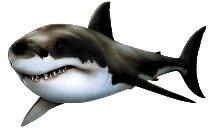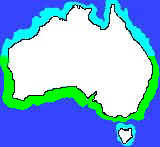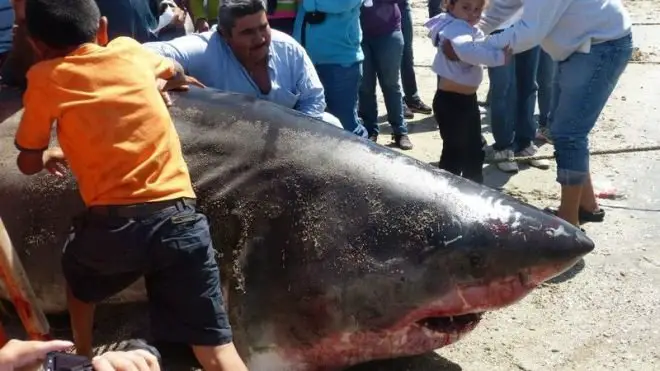|
|
|
|
|
Directory & Info for Fishing,
Angling, Fishing Tackle, Fishing Guides, Fly Fishing, Bass Fishing,
Sports fishing, Game Fishing....
See >>
Info on All types of
Fishing | Angling | Tackle etc
|
| |
|
Glossary of Fish, Seafood and Fishing Terms |
|
|
|
Australian Fish Bag Limits and Size Regulations |
|
Photos of Australian Seafood, Fish, Crustaceans &
Cephalopods and Information on each.... |
|
Abalone, Blacklip |
|
Albacore
Tuna |
|
Baler Shell |
|
Barbounia, Tiny |
|
Barracouta |
|
Barramundi |
|
Bass, Sea |
|
Batfish |
|
Batfish, Silver |
|
Blackfish |
|
Boarfish |
|
Bonito Tuna |
|
Bonito, Watson's Leaping |
|
Bream |
|
Bream, Butter |
|
Bream, Slate |
|
Bug, Moreton Bay
(Slipper Lobster) |
|
Bug, Balmain |
|
Butterfish |
|
Calamari,
Southern |
|
Carp, European |
|
Catfish, Blue |
|
Catfish, Lesser Salmon |
|
Cockles |
|
Cod, Bar |
|
Cod, Blue eye |
|
Cod, Coral Rock |
|
Cod, Ghost |
|
Cod, Maori |
|
Cod, Murray
|
|
Cod, Southern Rock |
|
Cod, Spotted |
|
Cod, Tomato |
|
Cod, Wirrah |
|
Cod, Yellow Spotted |
|
Coral Trout |
|
Cowanyoung |
|
Crab, Blue Swimmer |
|
Crab, Champagne |
|
Crab, Giant
|
|
Crab, Mud |
|
Crab, Spanner |
|
Crawfish |
|
Cuttlefish |
|
Dart Fish |
|
Dolphin Fish |
|
Dory, John |
|
Dory, Mirror |
|
Dory, Silver
|
|
Drummer, Southern |
|
Eel, Longfin |
|
Emperor, Red |
|
Emperor, Red Throat |
|
Flathead |
|
Flounder, Small Toothed |
|
Flutemouth, Rough |
|
Frost Fish |
|
Garfish |
|
Gemfish |
|
Goatfish |
|
Grouper |
|
Gurnard, Red |
|
Gurnard, Spotted |
|
Hairtail |
|
Hump Headed
Maori Wrasse |
|
Hussar |
|
Jackass Fish |
|
Jacket, Ocean |
|
Jacket, Sea |
|
Jewfish |
|
Jobfish, Gold Banned |
|
Jobfish, Rosy |
|
Kingfish,
Yellowtail |
|
Latchet Fish |
|
Leatherjacket, Reef |
|
Ling |
|
Lobster - Eastern
Rock |
|
Lobster - Southern Rock |
|
Long Tom |
|
Luderick |
|
Mackeral, Jack |
|
Mackerel, Slimey |
|
Mado |
|
Mahi Mahi |
|
Mangrove Jack |
|
Marlin, Black |
|
Marlin, Blue |
|
Marlin, Striped |
|
Melon Shell |
|
Monkfish |
|
Mono |
|
Moon Fish |
|
Morwong |
|
Morwong, Red |
|
Mullet - Roe |
|
Mullet, Diamond Scale |
|
Mullet, Red |
|
Mullet, Sea |
|
Mullet, Yelloweye |
|
Mulloway |
|
Mussels Black |
|
Mussels Greenlip |
|
Nanygai |
|
Octopus |
|
Orange Roughy |
|
Oreo, Black |
|
Oyster,
Native |
|
Oyster,
Pacific |
|
Oyster, Sydney Rock |
|
Parrot Fish |
|
Parrot Fish (2) |
|
Perch, Ocean |
|
Perch, Saddle Tail Sea |
|
Perch, Silver |
|
Perch, Splendid |
|
Perch, Stripey Sea |
|
Pig Fish |
|
Pike |
|
Pineapple Fish |
|
Prawn, Banana |
|
Prawn, King |
|
Prawn, Red Spot |
|
Prawn, School |
|
Prawn, Tiger |
|
Queenfish, Needleskin |
|
Rainbow Runner |
|
Redclaw Crayfish |
|
Redfish |
|
Ribaldo |
|
Ribbon Fish |
|
Rudder Fish |
|
Salmon, Atlantic |
|
Salmon, Australian |
|
Scad |
|
Scallops,
Queensland |
|
Scallops, Tasmanian |
|
Scorpion Fish, Raggy |
|
Shark |
|
Shark Black Tip |
|
Shark, Blue |
|
Shark Bronze Whaler (Dusky) |
|
Shark, Bull |
|
Sharks Fins |
|
Shark, Gummy |
|
Shark, Mako |
|
Shark, School |
|
Shark,
Tiger |
|
Shark,
Whiskery Reef |
|
Shark, White |
|
Shrimp, Mantis |
|
Sicklefish |
|
Silver Biddy |
|
Snapper |
|
Snapper, Big Eye |
|
Snapper, Fry Pan |
|
Snapper, Gold Band |
|
Snapper, King |
|
Snapper,
Red |
|
Snapper, Red Tropical |
|
Sole |
|
Sole, Tongue |
|
Squid, Arrow |
|
Squirrel Fish |
|
Stargazer |
|
Stingray, Butterfly |
|
Stripey Sea
Perch |
|
Surgeonfish, Sixplate Sawtail |
|
Sweetlip, Slatey |
|
Sweetlip, Yellow |
|
Swordfish |
|
Tailor |
|
Tarwhine |
|
Tilefish,
Pink |
|
Trevally, Big Eye |
|
Trevally, Golden |
|
Trevally, Silver |
|
Triple Tail |
|
Trout |
|
Trumpeter, Striped |
|
Tuna,
Albacore |
|
Tuna, Bigeye |
|
Tuna, Bluefin |
|
Tuna, Longtail |
|
Tuna, Skipjack |
|
Tuna, Striped |
|
Tuna, Mackerel |
|
Tuna, Yellowfin |
|
Venus Tusk Fish |
|
Whiting, Sand |
|
Whiting, School |
|
Wrasse |
|
Yabby,
Freshwater Crayfish |
|
Yellowtail |
|
FULL LIST of Fish &
Seafood |
|
Beche De Mer
(Sea Cucumber - Trepang) |
|
Amberfish |
|
Blackfish |
|
Black Teatfish |
|
Brown Sandfish |
|
Curryfish |
|
Elephants Trunks fish |
|
Greenfish |
|
Lollyfish |
|
Pinkfish |
|
Prickly Redfish |
|
Sandfish |
|
Stonefish |
|
Surf Redfish |
|
White Teatfish |
|
|
|
Commercial Seafood
Directory |
|
Sea-Ex Seafood, Fishing, Marine
Directory |
|
Aquaculture Directory |
|
Seafood
Trading Board |
|
Commercial Fishing |
|
Seafood Information by
Country |
|
Fish Photos & Fish
Information |
|
Interesting Fish Facts & Trivia |
|
Country Directories |
|
Thailand Business
Directory |
|
Seafood
|
|
Wholesale Seafood
Suppliers Australia |
|
Wholesale Seafood
Suppliers International |
|
Retail Seafood
Sales |
|
Seafood
Restaurants |
|
Seafood
Recipes |
|
Seafood
Information |
|
Seafood
Industry Resources |
|
Sea-Ex Seafood & Fishing
Directory -
Home Page |
|
White
Shark (Carcharodon carcharias) Photographs
and Information
|
Also known as White Pointer, great white shark and
White Death.
The great white shark is distributed
widely in temperate and subtropical oceans throughout the northern and southern
hemispheres, though it prefers temperate waters.
A streamlined, greyish-white body with white below. It has a fairly straight back
and unlike most other sharks, the upper lobe of the tail is not much larger than the
lower. It also lacks the pronounced extension of most other species which gives it
great speed through the water. A distinguishing feature is the large triangular and
serrated teeth in both jaws.
It is the largest dangerous shark in the world. It lives off the southern
Australian coast, from southern Queensland round to Western Australia, but has not been
recorded in Tasmanian waters. It grows to a length of about 12 metres. It will
eat almost anything, including seals, dolphins, other sharks and ships garbage. A roamer of ocean waters, it is rarely seen in estuaries. Neverless, it is a known
man-eater.
A shark with large, serrated triangular
teeth, a crescent-shaped caudal fin, and minute second dorsal anal fins.
Body fusiform, moderately stout; caudal with
distinct keel. Snout relatively short and bluntly conical. Teeth large, erect,
triangular and serrated; relatively more slender in low jaw; juveniles less than
200 cm with more slender teeth (sometimes with lateral cusplets and lacking
serrations on some cutting edges). First dorsal-fin origin over pectoral-fin
inner margins. Second dorsal-fin origin in advance of anal-fin origin; second
dorsal and anal fins minute. Caudal fin crescent-shaped, without a secondary
keel below extension of caudal peduncle keel. Tooth count 23-28/21-25. Total
vertebrae 172-187; pre-caudal 100-108.
Dorsal surface blue-grey to grey-brown, often
bronzy; white ventrally; boundary between these tones is mostly abrupt. Ventral
tips pectoral fins dusky; a dark spot may be present at the pectoral-fin axil.
Born at about 130 cm and attains 600 cm. Males
mature at about 350 cm and females at about 400 cm.
Cosmopolitan but mostly anti-tropical in
temperate seas. Probably throughout Australian waters, but more common in the
southern Queensland to North West Cape (Western Australia). Normally found over
the continental shelf and often close inshore; recorded from the surface to 1280
m.
Large adults feed mainly on seals,
whales and dolphins, but also take fish and other sharks. Younger great
white sharks feed mainly on fish. Females mature at 4.5 to 5 metres and
attain greater lengths and weights than males, which mature at about 3.0
metres. Minimum ages at maturity have been estimated to be 11 years for
females and nine years for males.
Did you know? A
group of sharks is called a "shiver"
Did you know? A
shark is the only fish that can blink with both eyes
|
 |
 |
Despite its high-profile media image, little is
known of the biology or behavior of this shark. It appears to be relatively
scarce to most other widely distributed species, being most frequently reported
from south Africa, the Great Australian Bight, northern California and the
north eastern United States. Like other mackerel sharks, it has a heat-exchanging
circulatory system enabling it to maintain body temperatures higher than that of
the surrounding seawater. Aspects of reproduction remain an enigma as only two
pregnant females have been recorded in contemporary times. Presumably oviphagous,
a pregnant female from Japan had 7 pups. The diet of specimens smaller than 300
cm consists mainly of a variety of teleost and elasmobranch fishes. Marine
mammals comprise an important part of the diet of larger sharks. More attacks on
humans, many of them fatal, have been attributed to the white shark than to any
other aquatic animal. Occasionally used commercially for meat, fins, hide and
oil.
Its weight alone makes it a top prize for game fishermen.
But it is now a
protected species in Australia. See NSW
Fisheries Announcement.
|
| Scientific Name |
Carcharodon carcharias |
| Location |
Southern half of Australia |
| Season |
All year round |
| Size |
To 12 metres |
| Australian Species Code |
PROTECTED SPECIES |
|
Nutritional
Information
For every 100 grams raw product
for Shark fillet. |
|
Kilojoules |
420 (100
calories) |
|
Protein |
21.2 g |
|
Cholesterol |
48 mg |
|
Sodium |
90 mg |
|
Total fat
(oil) |
0.9 g |
|
Saturated
fat |
27% of total
fat |
|
Monounsaturated fat |
20% of total
fat |
|
Polyunsaturated fat |
53% of total
fat |
|
Omega-3, EPA |
17 mg |
|
Omega-3, DHA |
252 mg |
|
Omega-6, AA |
30 mg |
|
Other
Shark Links:
SHARK RECIPES |

A great white shark nearly 20 feet
long and weighing 2,000 pounds was reportedly hooked by
commercial fishermen in the Sea of Cortez in northwestern
Mexico.
The massive catch, according to local reports by Milenio
News, would be one of the longest great white sharks ever
recorded if verified at a length 19.8 feet, or 6 meters.
The shark, which was dead when it was brought to the
surface, was netted by fishermen named Guadalupe and
Baltazar, according to reports. Read
more
SHARK ATTACKS
International Shark
Attack Files - How stats are gathered, the history of
the file, how to report a shark attack and who to contact
about the ISAF. Lots of information. Maps, graphs and
reports based on statistics from the International Shark
Attack File. Your risk of shark attack compared to your
chances of getting bit by animals in NY City, hit by
lightning, having an accident in your home, or being
attacked by an alligator. Learn what the different types of
attacks are, when and where they are most likely to occur.
http://www.flmnh.ufl.edu/fish/Sharks/ISAF/ISAF.htm
Interesting
Facts about Great White Sharks:
This
information is from
Getsmart Challenge - Great White Shark Quiz - How Stuff
Works
They are the most
notorious species of shark, boasting 3,000 jagged teeth
and a bite that kills. Yet some scientists say our fear
of great white sharks is irrational, the product of a bad
reputation they believe is inaccurate. Where do great whites
live? What do they eat? And is our fear of them really
overboard?
Great white sharks are far and away the leading
species when it comes to the number of shark attacks.
As of May 2008, 238 unprovoked attacks and 95 boat attacks,
resulting in 65 fatalities, have been officially recorded.
This trounces the species with the second most attacks, the
tiger shark, which has 88 recorded attacks.
Scientists who have studied the stomachs of great white
sharks say that humans have far too much muscle content
to be an ideal dinner for great whites. Sharks want fatty
blubber from animals like seals when they feed, not muscle.
A great white's main prey is any type of pinniped, or
aquatic carnivore. Seals and sea lions can be up to 50
percent fat, satisfying a shark's craving for blubber.
Great whites consume roughly 11 tons of food each year.
To give you an idea of just how much grub this is, a
150-pound human eats about half a ton of food in the same
amount of time.
Great whites usually use the underwater approach,
lurking beneath the surface before coming within a few feet
of their targets and attacking. When they attack using this
method, great whites bring their head to the surface to bite
their victim and then swim away and let it bleed to death.
The great white shark's scientific name, Carcharodon
carcharias, means "ragged tooth" in Latin. Each great
white has about 3,000 serrated teeth.
A typical great white weighs in at about 4,500 pounds
and grows to a maximum length of about 20 feet. Great whites
are the largest predatory fish in the sea, as the only
bigger sharks feed on plankton and small fish.
You can't find great whites at your local aquarium
because they're extremely difficult to keep in captivity,
assuming they survive the capture and transport to an
aquarium. Aquarium officials have had little success
determining the food, water and type of tank necessary to
accommodate a great white shark.
Great whites grow slowly and usually live about 30
years. Males reach maturity at about age 10, while
females reach maturity at about age 15.
Cooking
Shark:
|
Colour of Raw
Fillet: |
Pink |
|
Texture/firmness: |
medium/firm,
flaky. |
|
Fat Content:
|
Low |
|
Flavour: |
Medium, sweet. Mild to moderate
fishy flavour |
Smaller sharks have
sweet and delicious flesh, and are popular for their
boneless and thick flakes. They have been commonly used for
the traditional fish and chips but should not be overlooked
for barbecuing, poaching, braising and baking. Marinate
first in oil and lemon to tenderise the flesh.
Remove the skin before cooking, particularly when
barbecuing, to prevent it shrinking and tearing the flesh.
Excellent for soups, shark is most popularly used in
Asian-style shark fin soup and can also be successfully
combined with crab meat. The texture of shark also makes it
a great ingredient for fish cakes or kebabs.
Make good use of the firm flesh and enhance the flavour by
cooking slowly with strong tomato and herb sauce.
Ammonia odour in shark flesh can be reduced by soaking it in
milk, vinegar and water or lemon juice. However, if ammonia
odours are detected, it is advisable to reject the product.
Shark Recipes:
Mako Shark with Pineapple Salsa - Mako shark fillets
with a pineapple, lime, red onion, mint, cilantro salsa
Marinated Shark Steaks - Shark marinated in soy
sauce, rice wine, lemon juice, parsley, garlic and minced
green onions.
Shark Salad - Carrots, broccoli, mushrooms, green
peppers and Italian salad dressing over lettuce.
Shark Steaks Au Poivre - Shark steaks with a brandy
and pepper cream sauce.
|
|
Commercial Fishing for Shark:
More links about
Sharks:
White Shark Tagging
Scientists have been studying white
sharks at the Farallon Islands for more
than 20 years, originally using visual
observations and photography, and then
using electronic tag technologies. The
sharks arrive each fall at the islands
to feed on the seals and sea lions that
haul out there. Seals have a thick
blubber layer, providing a rich food
source for white sharks. To tag the
white sharks, researchers first attract
the sharks using a seal-shaped floating
decoy which is drifting behind a small
boat. As the shark approaches, the decoy
is drawn alongside the boat and the
researcher attaches the tag to the shark
as it swims by. The tag may remain
attached for up to a year recording data
about the depth, temperature and
location. At a pre-programmed date, the
tag is released from the shark and the
data are transmitted via satellite back
to the laboratory where they are
analyzed. These studies have revealed
that white sharks travel much more
extensively that was previously
imagined. White sharks from the
Farallones routinely journey as far as
the Hawaiian Islands and back in a
single year. They also yielded another
surprise, in that many white sharks
spend a significant portion of the year
in an area about halfway between Hawaii
and the North American Continent, in
what has come to be known as the “White
Shark Café.” To date scientists have not
determined whether white sharks go to
the café to eat or find mates (or both).
This is one of the many mysteries about
this fascinating animal. This
information is from
The Tuna Research and Conservation
Center
|
|




